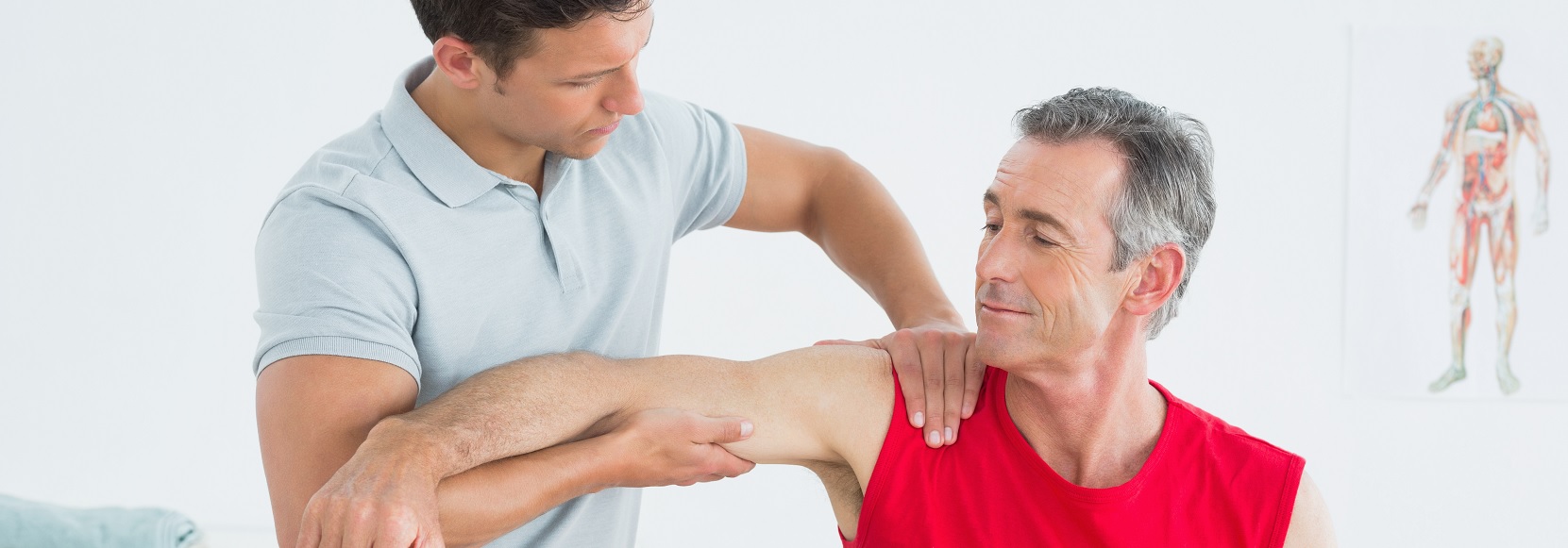Shoulder
Everyone has occasional discomfort in the shoulder including aches and pains. Your shoulder joints move all day long, every time you move your arms. So it’s not surprising that shoulder problems may develop from overuse or even everyday “wear and tear”. Shoulder problems can also occur from injuries or the natural process of aging. It may be helpful to know the makeup of the shoulder to better understand shoulder problems and injuries.
The shoulder is what is called a “ball-and-socket joint” with 3 main bones, the upper arm bone (humerus), collarbone (clavicle), and shoulder blade (scapula). These bones are held together in a joint by muscles, tendons, and ligaments.
The shoulder joint has the largest range of motion of any joint in the body. Because of this increased mobility, the shoulder is at higher risk for injury and problems. The acromioclavicular (AC) joint which is located above the shoulder is also at risk for injury.
Symptoms of a shoulder problem may include:
- Pain.
- Swelling or bruising.
- Stiffness, weakness, or decreased movement.
- A clicking, popping, or grating sound or feeling.
- A feeling of looseness or instability.
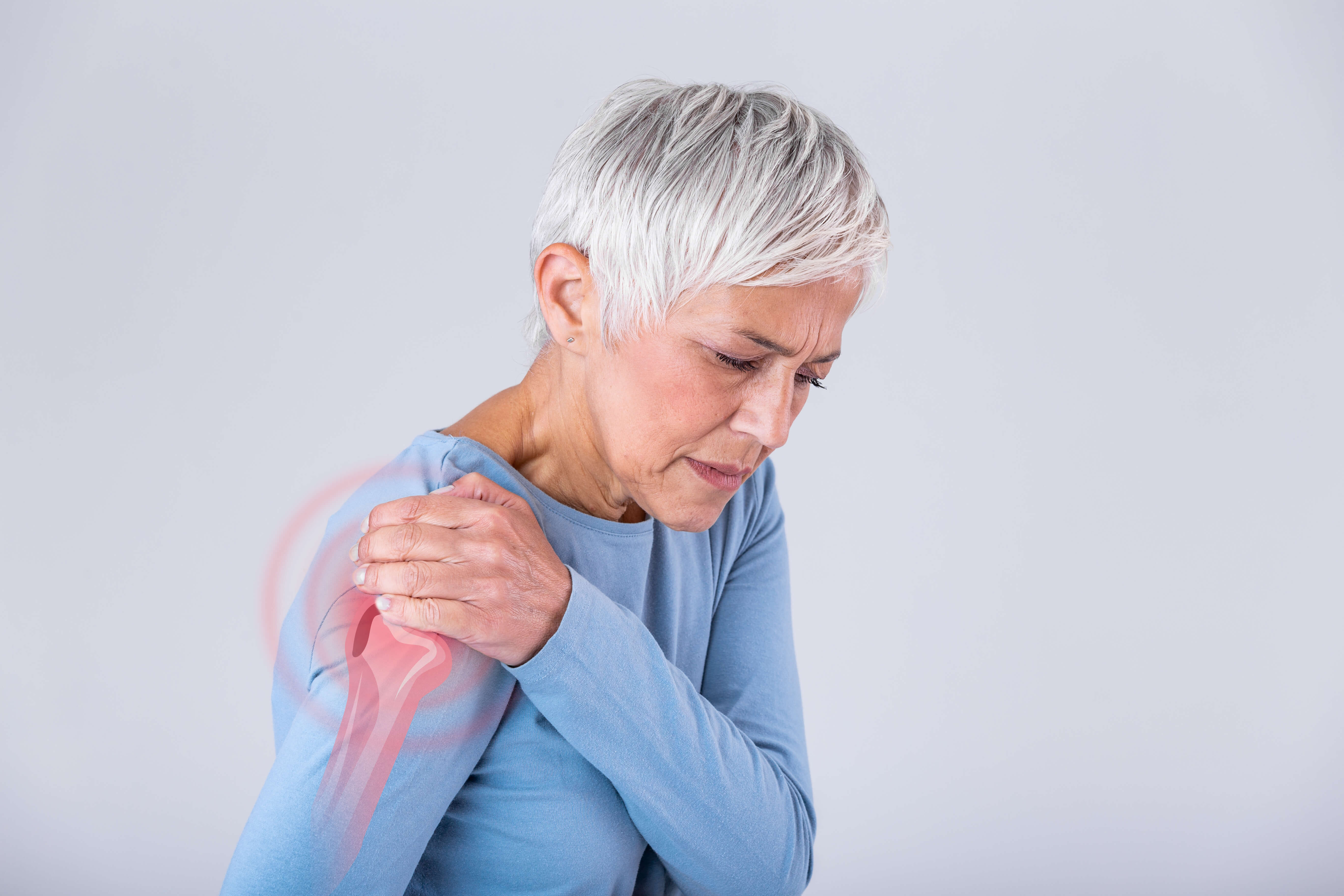
Injuries are the most common cause of shoulder problems by:
- Overuse injuries (such as bursitis, tendinitis, bicipital tendinitis, or muscle strain) occur from repeating activities (such as throwing, lifting, or reaching) stresses the shoulder joint and may cause irritation and inflammation. A frozen shoulder (adhesive capsulitis) often involves stiffness and reduced shoulder movement and may follow an overuse injury.
- Overhead arm movements may cause tendons to rub against a part of the shoulder blade called the acromion. This scraping may lead to an abrasion or inflammation of the rotator cuff tendons (also called impingement syndrome).
- A sudden (acute) injury may occur from a fall on an outstretched arm, a direct injury to the shoulder, or abnormal twisting of the shoulder. Examples of acute injuries include a torn rotator cuff, dislocated shoulder, (type of strain), sprained shoulder, or fracture.
Pain can be very sudden and even severe. Bruising and swelling may develop within minutes of the injury. If nerves or blood vessels have been injured during the injury, the shoulder, arm, or hand can feel numb, tingly, weak, or cold or may look pale or blue.
There are many other possible causes of shoulder pain beside those above.
- Muscle tension and/or poor posture may cause shoulder discomfort, especially if you are experiencing a lot of stress or sit with a rounded posture.
- Pain that is worse in the morning and improves during the rest of the day be caused by osteoarthritis. This may develop from injury or simple wear and tear.
- Pain and occasional locking of the shoulder may be caused by calcium deposits in the shoulder joint.
- Shoulder and arm pain that worsens when you move your neck may be caused by an injured or pinched nerve or a herniated disc in the neck.
- Gradual onset of shoulder pain, especially if associated with night pain, weight loss, fever, or chills, may be related to a tumor of the bone and should be carefully examined by a doctor.
In Advanced Physical Medicine we offer effective Treatments for a shoulder problem or injury that may include physical therapy, chiropractic care, regenerative treatments like cell therapy and platelet rich plasma, and more. Treatment depends on:
- The type, location, and severity of the shoulder problem.
- The age, health status, and activities requirements of the patient.
Call us TODAY to schedule a FREE consultation!

Elbow
Everyone has had a minor elbow injury or problem. Most people have bumped or hit their “funny bone” at the back of your elbow, causing shooting numbness and pain. Maybe your elbow became sore after some exercise or physical activity. Home treatment often can help reduce these minor aches and pains.
Injuries (trauma) are the most common cause of elbow pain:
Overuse injuries (such as bursitis or tendinitis) occur from doing the same movement over and over. This repeated activity (such as throwing, lifting, or using a hand tool) stresses joints and other surrounding tissues and may lead to irritation, inflammation, and eventually pain.
- Soreness or pain felt on the outside (lateral) part of the elbow may be what is commonly called “tennis elbow” (lateral epicondylitis). This is the most frequently encountered type of tendinitis that affects the elbow and most often occurs when a person overuses the forearm muscles. This overuse may occur during sports (tennis), jobs (such as carpentry, typing) or daily activities (such as lifting objects).
- Soreness or pain in the inner (medial) part of the elbow may be “golfer’s elbow” (medial humeral epicondylitis). In children who paly in sports that involve a a lot of throwing, the this type elbow pain may be described as “Little Leaguer’s elbow.”
- Swelling on the back side of the arm, behind the elbow may be olecranon bursitis (Popeye elbow).
A sudden (acute) injury may occur from a direct hit to the elbow, a fall on onto the elbow or arm, or from twisting, or bending the arm abnormally.
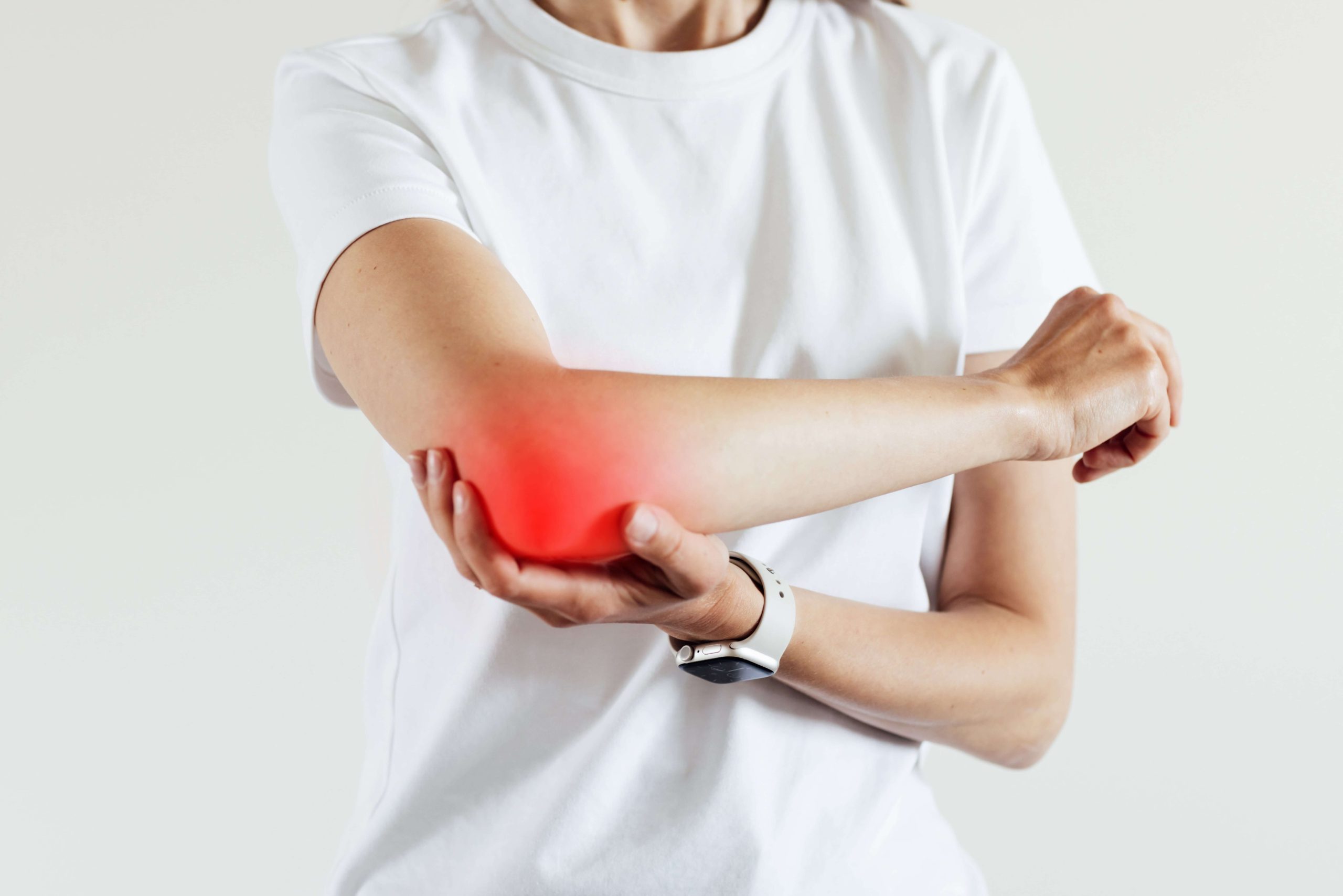
An acute injury includes:
- Sprain/Strain
- Fracture or Dislocated elbow
Elbow injuries can occur commonly in children because they use their outstretched arms to protect themselves when they fall. Elbow pain or discomfort is not always caused by injury. However, a previous injury or overuse may increase your likelihood of getting an elbow problem in the future:
- Pain that is worse in the morning or early in the day and improves during the remainder of day may be caused by osteoarthritis, which may develop from injury or simple wear and tear. There are many other types of arthritis as well that can affect the elbow, such as rheumatoid arthritis, gout, and lupus.
- Pain that occurs in an elbow that is accompanied by redness, swelling, warmth, fever, chills, or even pus may be an infection. There are many types of infection which include skin infections (cellulitis), a pus-filled pocket (abscess) just under the skin surface or deep in tissue, joint infections (infectious arthritis or septic bursitis), or bone infections (osteomyelitis).
- Occasionally elbow pain is caused by a pinched nerve (numbness and tingling is often present) from the neck or a problem elsewhere in the body, such as the heart which is referring pain to the arm.
In Advanced Physical Medicine we offer effective Treatments for a shoulder problem or injury that may include physical therapy, chiropractic care, regenerative treatments like cell therapy and platelet rich plasma, and more. Treatment depends on:
- The type, location, and severity of the injury or problem.
- The age, health condition, and activities (such as jobs, sports, or hobbies) of the individual.
Call us TODAY to schedule a FREE consultation!
A child with an elbow problem, pain or injury may need medical evaluation to rule out the possibility that damage has not occurred to the bony growth plates at the end of their bones.
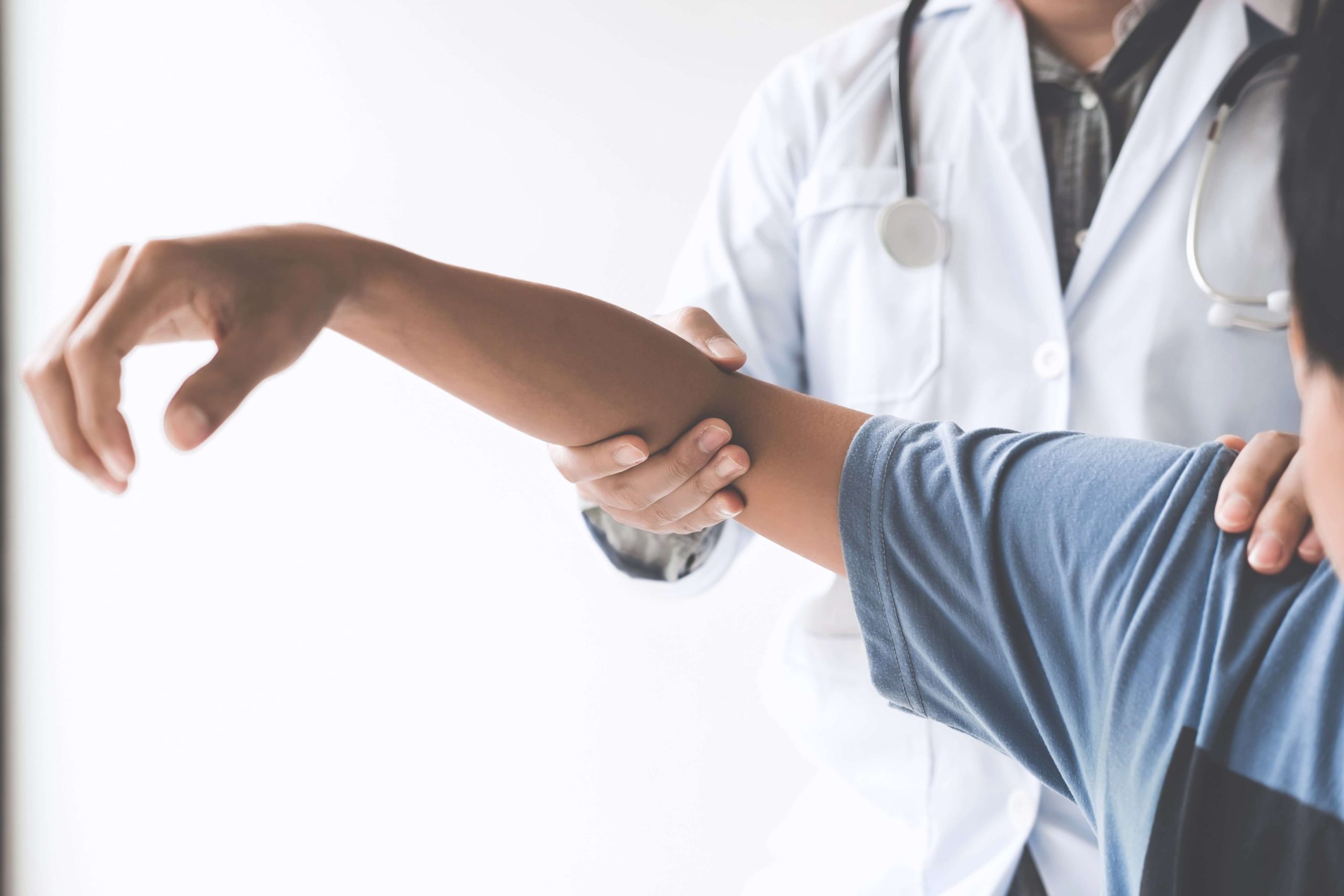
Finger, hand, or wrist
Everyone has had a minor finger, hand, or wrist problem that caused pain or swelling at one time or another. Most of the time our body movements do not cause problems, but occasionally symptoms develop from everyday wear and tear, overuse, or an injury.
Finger, hand, or wrist injuries can occur during:
- Sports.
- Work-related activities.
- Work around the home, especially if using machinery and hand tools.
- Accidental falls or injuries.
Everyone has had a minor finger, hand, or wrist problem that caused pain or swelling at one time or another. Most of the time our body movements do not cause problems, but occasionally symptoms develop from everyday wear and tear, overuse, or an injury.
Finger, hand, or wrist injuries can occur during:
- Bruises. After a wrist or hand injury, bruising may occur which can extend to the fingers from the effects of gravity.
- Injuries to ligaments or tendons, joints and muscles
- Fractures/Dislocations.
- Crushing injury, which can lead to compartment syndrome.
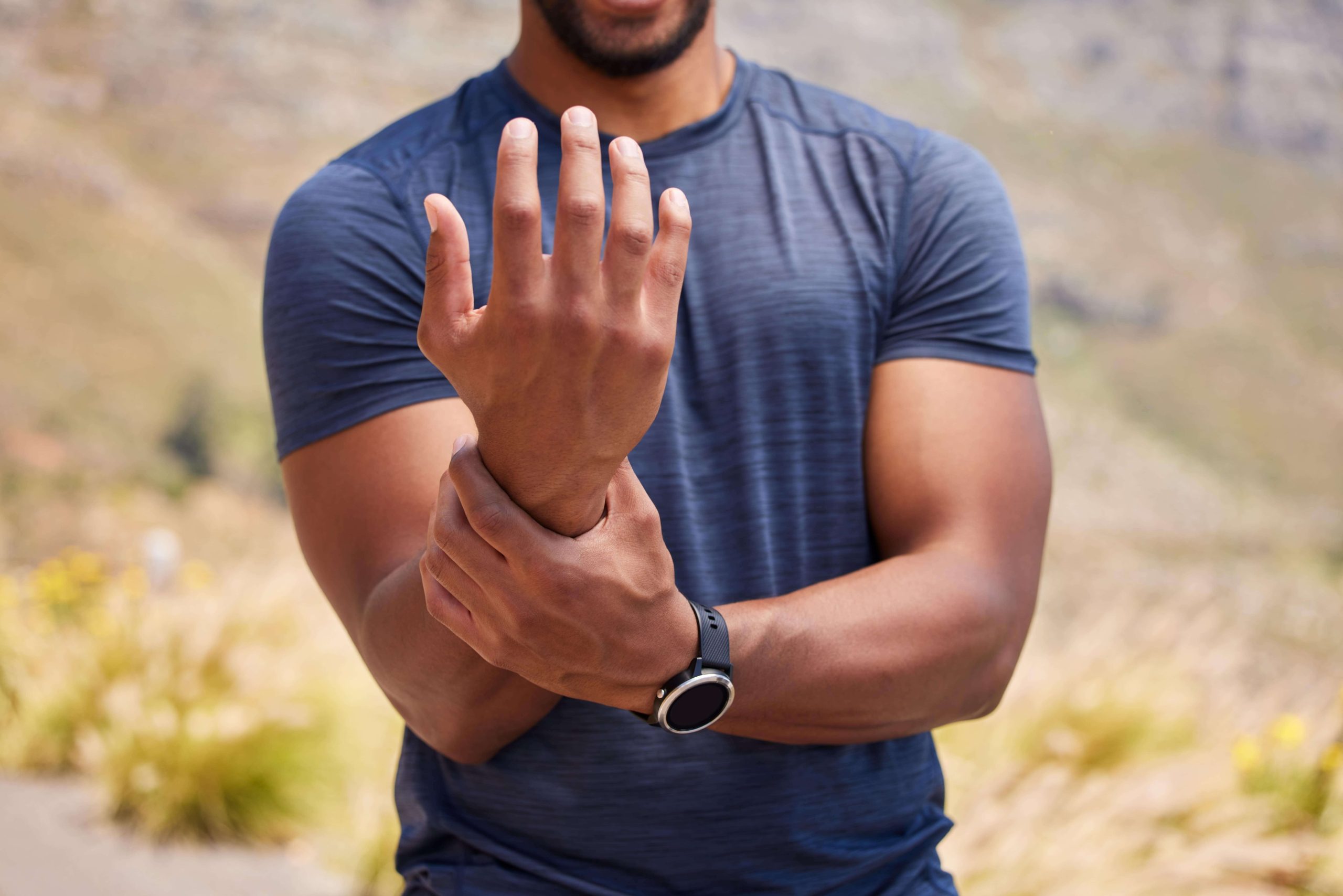
Overuse injuries:
Overuse injuries occur when too excessive stress is placed on a joint or other tissue, most often by “overdoing” an activity or repeating the same activity too much, like:
- Carpal tunnel syndrome.
- Bursitis/ Tendonitis.
- Tenosynovitis.
Treatment depends on :
- The type, location, and severity of the injury.
- How long ago it has been since the injury occurred.
- The age, health condition, and activities (such as work, sports, or hobbies) of the patient.
Call us TODAY to schedule a FREE consultation!

